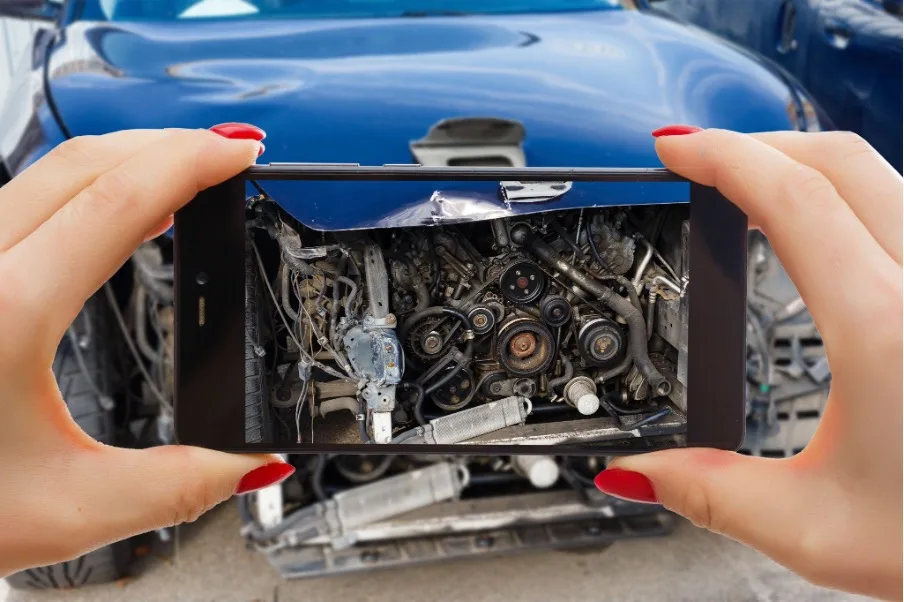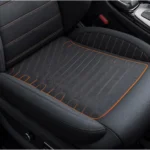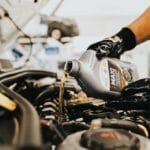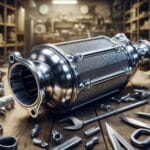
Your car’s engine is like the heart of your vehicle. When it’s not running right, everything feels off. But here’s the real question: Can your car insurance help if the engine gets damaged?
Engine trouble can be costly, but the right cover saves the day. Let’s break it down and see when engine damage is covered under your car insurance.
What is Engine Damage in Car Insurance?
Engine damage refers to any mechanical or electrical failure that affects your car’s engine performance. It could be due to water ingress, oil leakage, hydrostatic lock, overheating, or wear and tear over time.
While some of these are avoidable with regular maintenance, others can take you by surprise. The big question remains whether your car insurance policy will cover the cost.
Understanding your policy’s terms is crucial because not all damages or scenarios are included in standard coverage. Knowing this in advance can save you from unexpected out-of-pocket expenses during critical times.
Does a Standard Car Insurance Policy Cover Engine Damage?
In most cases, a basic car insurance policy covers accidents, third-party liabilities, theft, and natural calamities. However, it does not automatically include engine damage, especially if it isn’t caused by an accident.
You may require specific add-ons, such as an engine protect cover, for full protection. This add-on is particularly useful in cases of water ingression or oil leakage, which are common during floods. Without it, you could end up paying for costly repairs out of pocket.
Types Of Engine Damages Covered By Insurance
Engine damage is not automatically covered under a standard comprehensive car insurance policy unless it results directly from an accident. To get protection against other common engine issues, you will need to include an Engine Protect Add-On in your policy.
What’s Covered Without Engine Protect Add-On
- Accident-Induced Engine Damage
If your car’s engine is damaged during a collision, a standard comprehensive policy typically covers the cost of repairs.
What’s Covered With Engine Protect Add-On
This add-on provides broader protection for engine-related issues that are not accident-related, including:
- Water Ingress
Covers damage caused by floods or heavy rains, which can lead to short-circuiting or hydrostatic lock.
- Hydrostatic Lock
Protects against engine damage when water enters the combustion chamber, especially common if you try starting your car in waterlogged areas during monsoons.
- Oil Leakage
Covers damage resulting from oil leaks that can cause internal parts to seize or fail.
- Lubrication Failure
Includes protection if engine components are damaged due to insufficient lubrication.
Keep in mind, without the Engine Protect Add-On, your standard policy does not cover most non-accidental engine damages. Including this add-on ensures you are protected from costly repairs due to water damage or mechanical failures.
Also Read:
- Car Maintenance Checklist: Keep Your Vehicle Running Smooth
- Top 10 Best Electric Scooter in India – Price, Range & Features
- Types of Cars: A Comprehensive Guide to Vehicle Categories for Every Need
What is an Engine Protection Add-On Cover?
This is a rider or add-on you can purchase with your comprehensive car insurance policy. It specifically covers repair and replacement costs due to engine-related issues.
What Does it Include?
- Repair of the engine and gearbox
- Damage due to water or oil leakage
- The labour cost of engine repair
What is Usually Excluded?
- Wear and tear
- Poor maintenance
- Damage due to negligence (like starting a submerged car)
Benefits Of Having Engine Protection Cover
This simple add-on can really ease the burden on your wallet when engine trouble strikes. It’s especially useful if your car is new, high-end, or frequently driven through tough conditions.
1. Cut Down on Heavy Repair Costs
Engine fixes don’t come cheap. This cover helps cover the big bills.
2. Handy During Monsoons
Ideal if you live in waterlogged cities where a hydrostatic lock is common.
3. Authorised service access
Repairs happen at trusted garages with genuine parts, so your car stays in good hands.
4. Best for newer or premium cars
Expensive engines mean expensive repairs. This add-on is a smart backup.
5. Worry-free driving
Whether it’s a downpour or a road trip, knowing your engine’s covered keeps things stress-free.
Who Should Opt For Engine Damage Cover?
While not mandatory, engine damage cover can be a smart addition for many car owners, especially if your vehicle is an important part of your everyday life. Here’s who can benefit the most:
1. Owners Living in Flood-Prone or Coastal Cities
If you live in places where heavy rainfall, flash floods, or waterlogging are common (think Mumbai, Chennai, or Kolkata), your engine faces a higher risk of water damage. It’s a smart safeguard when the rains hit hard, keeping your engine protected from seasonal surprises.
2. People with New or Premium Vehicles
Newer models and luxury cars often have more complex and expensive engine parts. An engine add-on can save you a lot of money on repairs and protect your investment in the long run.
3. Those Who Plan to Keep Their Car Long-Term
If you’re not planning to change your car anytime soon, maintaining its engine health becomes crucial. This cover ensures you’re financially protected even as the vehicle ages and its parts become more susceptible to damage.
4. Daily Commuters and Long-Distance Drivers
If your car spends a lot of time on the road, whether for work, school runs, or road trips, this coverage ensures peace of mind in case something goes wrong under the hood.
Things To Keep in Mind Before Making An Engine Claim
Claiming engine damage is simple, but being prepared can make the process even smoother. Taking a few proactive steps can help you avoid common delays and ensure your claim is processed smoothly:
- Always read the fine print of your car insurance policy.
- Understand which damages are excluded.
- Don’t delay informing your insurer.
- Avoid driving through flooded roads.
- Keep track of your vehicle’s service schedule to ensure it stays in optimal condition.
What to do When Engine Damage Occurs?
When your bike’s engine suffers damage, it can feel overwhelming. But with the right approach, you can ensure a smooth claim process and get your two-wheeler back on the road quickly. Here’s what to do step by step to handle engine damage efficiently and make a successful claim.
1. Reach out to Your Insurer As Soon As You Notice The Damage
Notifying your insurer at the earliest ensures a smoother and faster claims process. It also helps avoid delays that might affect your eligibility for a claim.
2. Avoid Restarting Your Car if Submerged
Turning on the engine in water can worsen internal damage, especially due to hydrostatic lock.
3. Get Your Car Towed to a Network Garage
If your car breaks down, arrange to have it towed to a network garage for hassle-free repairs. This ensures you get quality service, faster claim approvals, and minimal out-of-pocket expenses, making the repair process smooth and efficient.
For instance, Digit Insurance provides access to 9000+ cashless network garages across India. This makes it quicker and easier to report engine damage, ensuring your repairs are handled smoothly without unnecessary delays.
4. Submit the Required Documents and Photos
Digitally share clear images of the damage along with the necessary paperwork to support your claim.
5. Let the Surveyor Assess the Damage
An insurance-appointed surveyor will inspect your vehicle to verify the extent of engine issues before approving repairs.
6. Get Repairs Done and Claim Settlement Processed
Many insurers now offer high claim settlement rates for private cars, ensuring a quick, smooth, and hassle-free experience for policyholders.
Yes, engine damage can be covered by insurance, but only if you have the right plan. A basic policy usually won’t be enough. Adding an engine protection add-on to your comprehensive cover helps safeguard against unexpected and costly repairs.
So, when it’s time to renew your car insurance policy, make sure your engine is just as protected as the rest of your car.
Conclusion
Your car’s engine is its lifeline — and repairing it without insurance can burn a hole in your pocket. While a standard car insurance policy may cover accident-related damages, it usually falls short when it comes to engine-specific issues like water ingress, hydrostatic lock, or oil leakage. That’s where an Engine Protection Add-On becomes a game-changer.
If you own a new, premium, or long-term vehicle — or drive in flood-prone areas — this add-on is not just an option but a smart investment. It ensures peace of mind, protects you from hefty repair bills, and keeps your car running smoothly in the long run.
In short, don’t wait for engine trouble to surprise you. Strengthen your car insurance policy with the right coverage today, and drive worry-free tomorrow.








